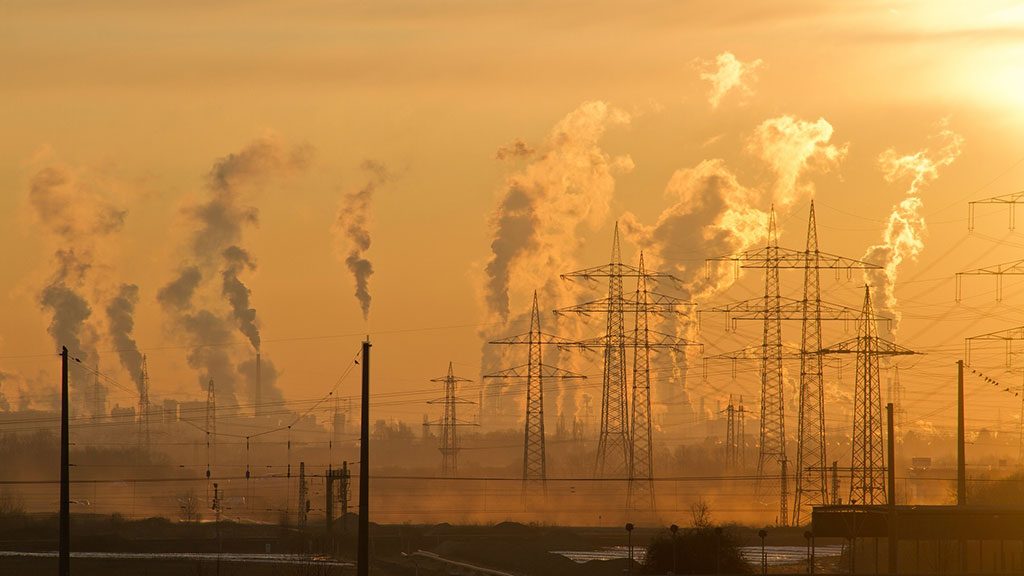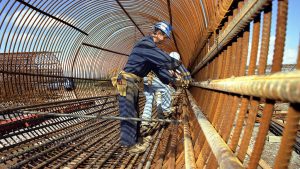Pouring concrete in -30 C weather and juggling Ministry of the Environment permit windows at a location 36 kilometres from the nearest town all added up to a series of daunting challenges at a northern Ontario power plant.
It was how those hurdles were overcome, however, that garnered the Yellow Falls hydro generating plant a 2018 Ontario Concrete Award in the infrastructure category.
Boralex and First Nation partners Taykwa Tagamou Nation (TTN) and the Mattagami First Nation set about in 2015 to start construction of the $75 million, 16 MW project. The design called for a combined intake and powerhouse on the west bank of the Mattagami River with two 8 MW turbine-generators.
A spillway with three vertical lift, fixed-roller gates and one set of stop logs was to be built adjacent to the powerhouse. The powerhouse was to be flanked by two sections of dam, each about 15 metres high.
Yellow Falls is 36 kilometres by road and about 18 kilometres by air from the town of Smooth Rock Falls, Ont., which is about 800 kilometres north of Toronto.
We had to build another 13 kilometres of road to get to the site itself plus three bridges,
— Derek Picard
Pomerleau
Every project has its challenges, however, and the Yellow Falls hydro station had more than its share.
As Pomerleau’s Derek Picard explains, the first challenge was getting to the site itself.
“There was about 12 kilometres of ATV-type road so we had to upgrade that,” he says. “Then we had to build another 13 kilometres of road to get to the site itself plus three bridges.”
At the same time they ran in 24 kilometres of power cable to feed the equipment on site, most importantly the concrete plant that Lafarge Canada brought and constructed on site to keep feeding the pours.
“Lafarge was great and that plant they brought in was a big help because we were pouring about 1,000 cubic metres a week at peak,” Picard says. “So all the powder had to be brought in on trucks three times a week. That was a lot of planning and co-ordination working two weeks ahead.
“We also had eight to 10 concrete pump trucks on site at all times so they went from the plant on site to the pour location and we emptied the truck in about four minutes so it could go back and get refilled.”
One of the big challenges was pouring concrete in the harsh winter, says Picard.
Temperatures of minus 40C were hard on the materials, equipment and the crews, he says.
“We had to make sure everyone had lots of protection,” he says. “And we used gel tarps to protect the concrete during the curing process and retain the humidity because when it’s that cold the air is very dry. And of course we could not use a hose with water because it was so cold and would create problems like ice.”
The water itself wasn’t as much of a problem in the winter but in summer it became a bit of a challenge, he says.
“It turned out the water was very warm, up around 22C whereas you want it at around 15C or 16C,” he says. “So we had to truck in ice with the bags of cement to use in the mix to cool it down.”
Once the road was built and power run in, crews installed coffer dams, dewatered and then got to work creating the foundations for the generating plant around 2016.
While the initial project was budgeted to be completed in 18 months — ambitious given the location and inherent challenges — it took 30 months because of some other unexpected challenges, says Picard.
“We were given specific windows to work around the river by the Ministry of Environment because of the fish,” he says. “We had to identify the types of fish in a survey prior to starting and then the ministry gave us windows. Unfortunately we missed some of those windows and had to wait.”
Logistics was also an issue with the day shift crew of 85 bused in from camp 24 kilometres away along with the night shift of 35 workers.
The narrow size of the site was also an issue because once the cement plant was installed there wasn’t a lot of room for lay down.
“We had to screen the aggregates and move them a little further out to make room,” says Picard. “But that’s the kind of challenge we take on. We’re very experienced in wind power and they are often in very isolated locations.”
The plant is currently operational and generating power, says Guillaume Pouliot, Boralex’s project manager. It should come on line to start earning revenue by the end of the summer.
Just don’t tell him small jobs are easier than the billon-dollar contracts.
“It doesn’t matter really, 5 MW or 50 MW, they all have the same equipment and construction,” he laughs. “Small jobs are just the same as big jobs.”










Recent Comments
comments for this post are closed